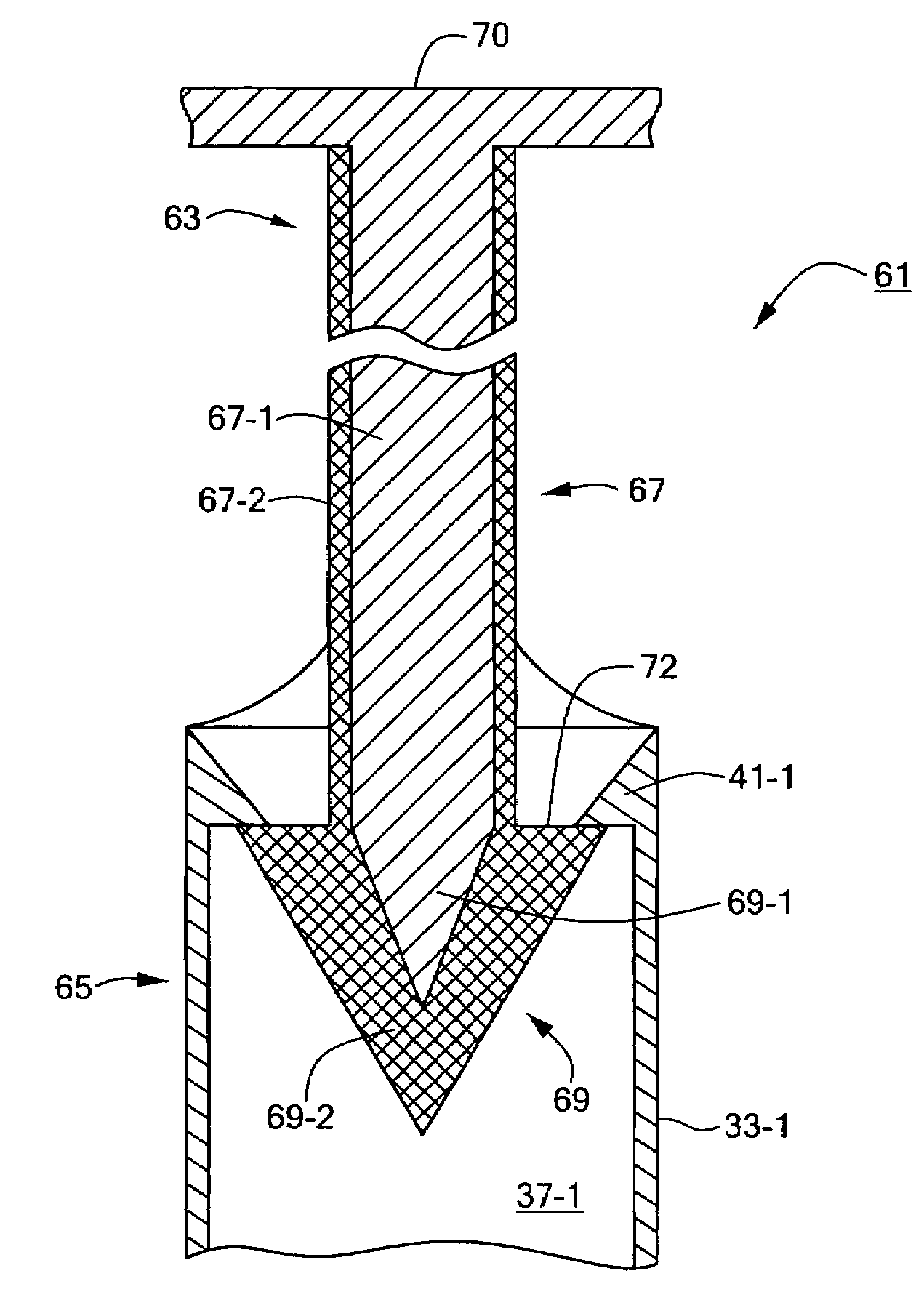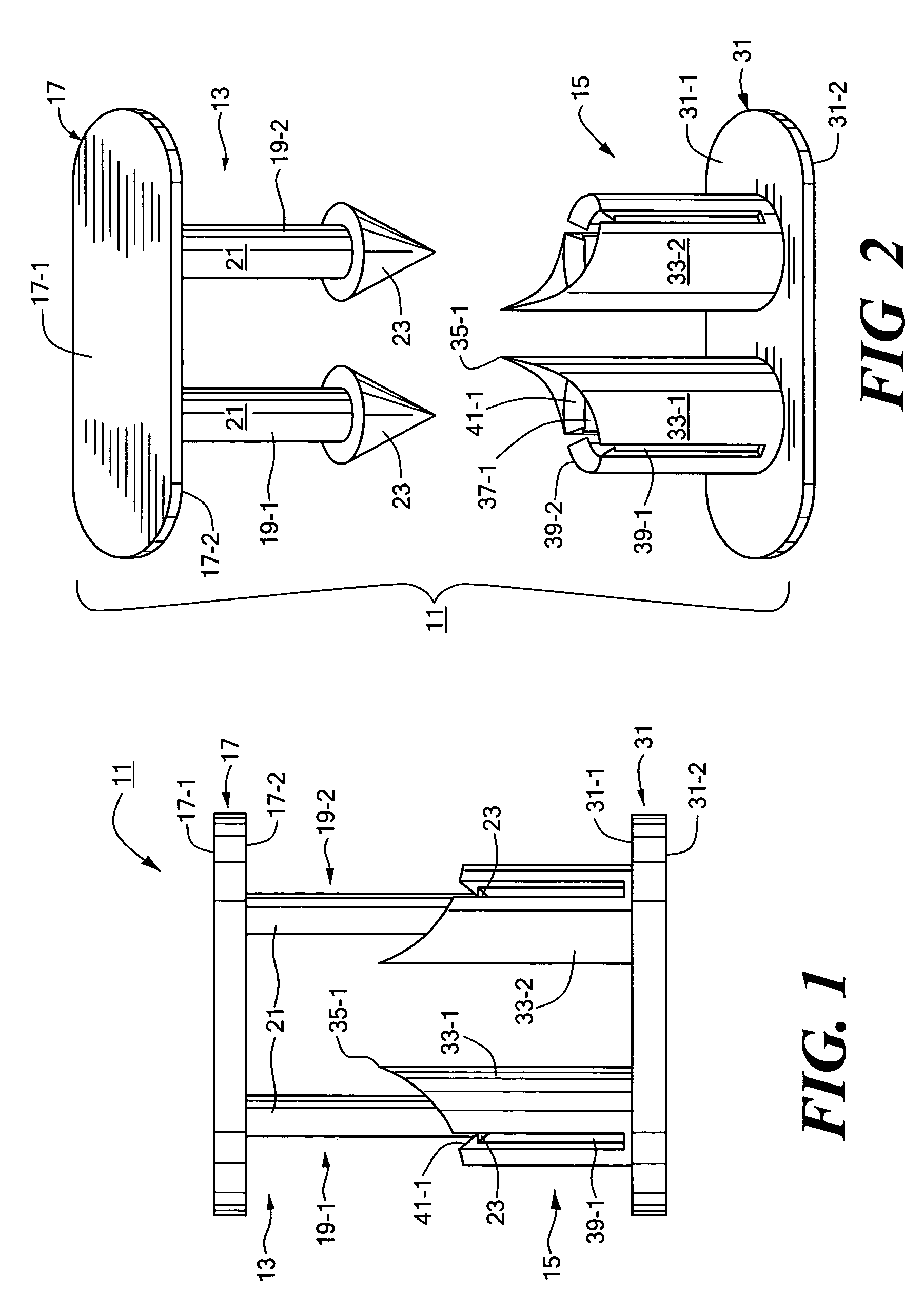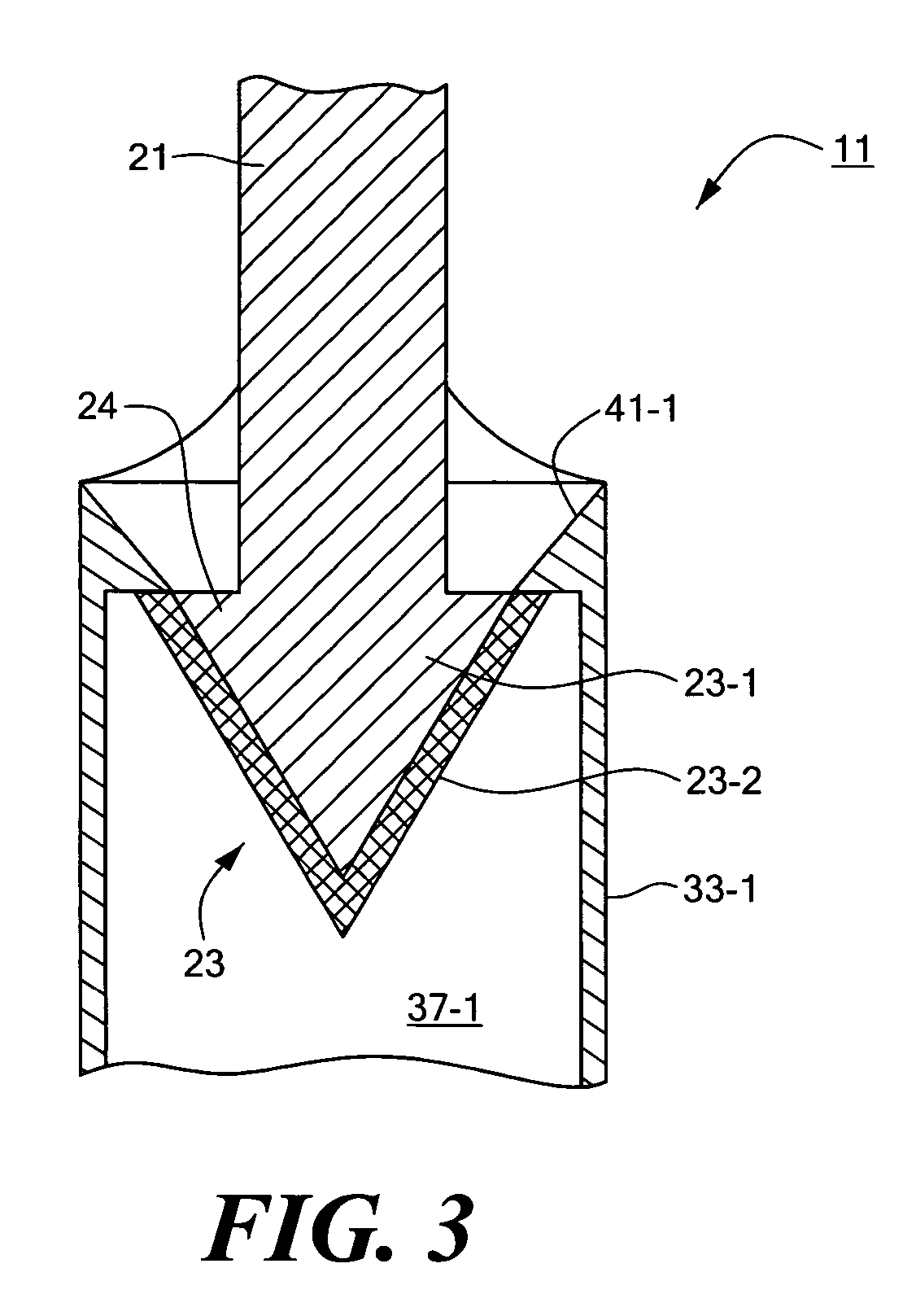Impermanent biocompatible fastener
- Summary
- Abstract
- Description
- Claims
- Application Information
AI Technical Summary
Benefits of technology
Problems solved by technology
Method used
Image
Examples
first embodiment
[0032]Referring now to FIGS. 1 through 3, there are shown various views of a biocompatible fastener constructed according to the teachings of the present invention, said biocompatible fastener being represented generally by reference numeral 11.
[0033]Fastener 11, which is particularly well-suited for, but is not limited to, temporarily securing the gastric fundus to the esophagus as part of a fundoplication procedure, is a two-piece, mating-type fastener comprising a male portion 13 and a female portion 15.
[0034]Male portion 13, which may be made by molding, is a generally rigid structure comprising a base 17. Base 17, which is generally flat and oval, has a top surface 17-1 and a bottom surface 17-2. A pair of parallel male members 19-1 and 19-2 are disposed on opposite sides of the transverse centerline of base 17 and extend downwardly a short distance from bottom surface 17-2 of base 17. Male members 19-1 and 19-2 are substantially identical to one another, each male member 19 co...
second embodiment
[0043]Referring now to FIG. 4, there is shown a fragmentary section view of a biocompatible fastener constructed according to the teachings of the present invention, the biocompatible fastener being shown represented generally by reference numeral 61.
[0044]Fastener 61 is similar in many respects to fastener 11, fastener 61 comprising a male portion 63 and a female portion 65, male portion 63 being identical in overall size and shape to male portion 13 of fastener 11, female portion 65 being identical in all respects to female portion 15 of fastener 11.
[0045]The principal difference between fastener 61 and fastener 11 is that male portion 63 of fastener 61 is constructed to comprise, instead of a pair of posts 21 each terminating at its bottom end in a generally conical head 23, a pair of posts 67 each terminating at its bottom end in a generally conical head 69 (only one such post 67 and head 69 being shown and described herein although it is to be understood that the two post / head ...
third embodiment
[0051]Referring now to FIG. 5, there is shown a fragmentary section view of a biocompatible fastener constructed according to the teachings of the present invention, the biocompatible fastener being shown represented generally by reference numeral 81.
[0052]Fastener 81 is similar in many respects to fastener 61, fastener 81 comprising a male portion 83 and a female portion 85, male portion 83 being identical in overall size and shape to male portion63 of fastener 61, female portion 85 being identical in all respects to female portion 65 of fastener 11.
[0053]The principal difference between fastener 81 and fastener 61 is that the bottom portion of post 87 and the entirety of head 89 are made only of bioabsorbable material whereas the remainder of post 87 comprises a core 87-1 made out of a non-bioabsorbable material and a coating 87-2 made out of a bioabsorbable material having a desired degradation rate. As can readily be appreciated, the relative lengths of core 87-1 and post 87 can...
PUM
 Login to View More
Login to View More Abstract
Description
Claims
Application Information
 Login to View More
Login to View More - R&D
- Intellectual Property
- Life Sciences
- Materials
- Tech Scout
- Unparalleled Data Quality
- Higher Quality Content
- 60% Fewer Hallucinations
Browse by: Latest US Patents, China's latest patents, Technical Efficacy Thesaurus, Application Domain, Technology Topic, Popular Technical Reports.
© 2025 PatSnap. All rights reserved.Legal|Privacy policy|Modern Slavery Act Transparency Statement|Sitemap|About US| Contact US: help@patsnap.com



